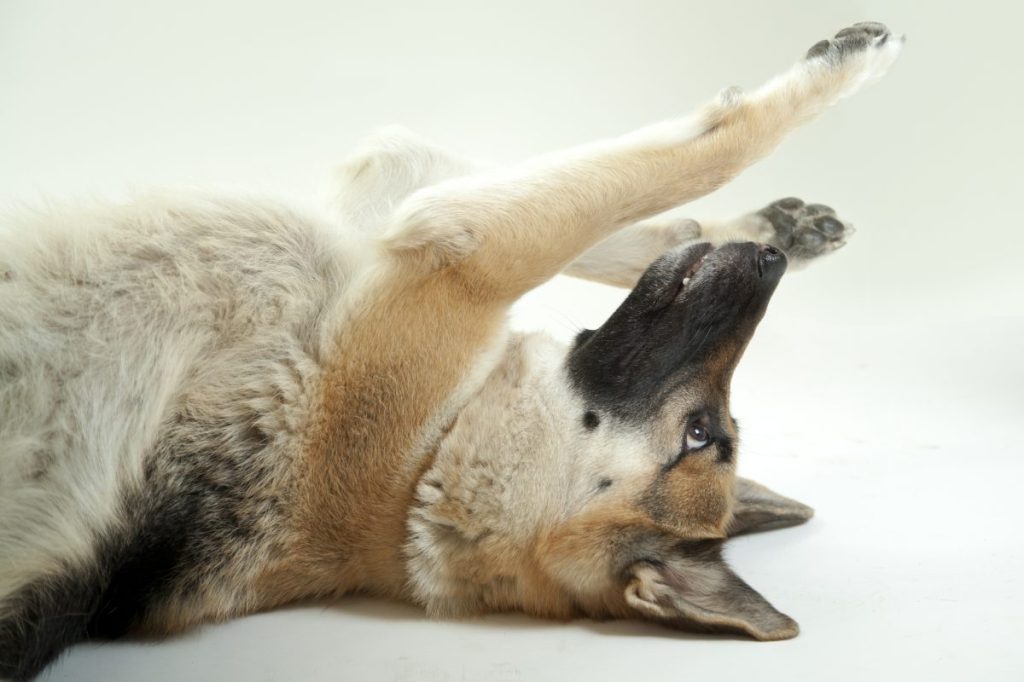Question:
I’ve heard conflicting advice about “alpha rolls.” What are they and do you recommend them?
Answer:
An alpha roll is a term used to incorrectly describe the situation where a higher-ranking wolf throws a lower-ranking individual onto their. back. Then, they stand over the prone wolf in order to display a higher status. In reality, in a pack of wolves, higher-ranking wolves do not roll lower-ranking wolves on their backs. Rather, lower-ranking wolves show their subordinate status by offering to roll on their backs. This submissive roll is a sign of deference, similar to when someone greets the queen or the pope by kneeling. Consequently, a more appropriate term for the posture would be a “submissive roll.”
The trouble with alpha rolls
Humans often try to roll dogs on their backs and hold them there in order to punish them for bad behavior, especially when that behavior involves growling or other aggression. The thought is that they are mimicking what a wolf would do in the wild to assert a higher rank.
There are several problems with performing an alpha roll. First, the most common cause of aggression is fear. Pinning a dog on their back may suppress the aggressive behavior temporarily but it will not address the root of the fear. Secondly, forcing a dog onto its back can heighten aggression. Many dog parents have been bitten performing an alpha roll. Also, many have inadvertently trained their dog to expect a fight and thus become more reactive in similar situations. Thirdly, most bad behaviors are not related to dominance. Dominance is a relationship between individuals that is established by force, aggression, and submission in order to gain priority access to valued resources.
Usually, when dogs are misbehaving they are not being aggressive and they are not trying to gain priority access to resources. Rather they are just performing a behavior that has been rewarded in the past. Consequently, a more appropriate way to modify behavior is to remove the rewards for bad behavior and only reward good behavior.









